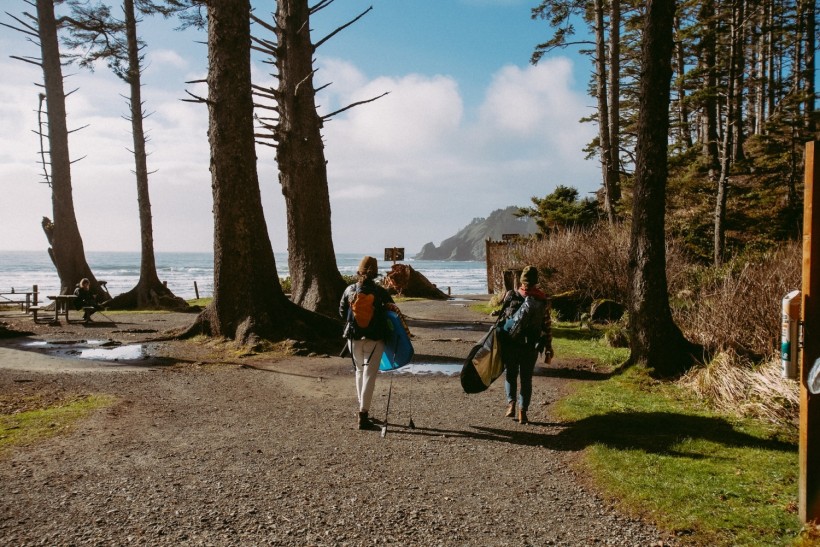
Outdoor adventures offer a refreshing escape from the hustle and bustle of daily life, allowing us to reconnect with nature and gain mental clarity, and test the limits of our physical endurance. Whether you're planning to scale a rugged mountain, navigate the rapids of a bustling river, get out on the water of a lake or sea, or simply enjoy a peaceful hike through the forest, preparation is key to ensuring your experience is both safe and enjoyable. Below are invaluable tips that cover essential aspects of planning and executing outdoor adventures.
Research Your Destination Thoroughly
Before lacing up your boots or putting on your surfing gear, it's crucial to know what to expect. Start with a detailed map of the area and study it. Understand the trails, the expected weather conditions, and the type of wildlife or water conditions you might encounter. Look for local advice from forums and social media groups where experienced adventurers share their insights.
Educate yourself about the local regulations and requirements. Some areas might need permits, have campfire restrictions, or have specific rules about wildlife interactions or where you can go on the water. Also, always inform someone about your plans and expected return so that in the case of an emergency, help knows where to find you.
Pack Smart — The Essentials for Every Trip
Packing for an outdoor adventure is a balancing act between being prepared and not overloading yourself. Make a checklist of essentials: a first aid kit, a multi-tool, a flashlight or headlamp with extra batteries, a fire starter, and a whistle are must-haves for camping adventures. For navigation, in addition to your map, carry a compass and consider a GPS device.
When it comes to food and water, plan for the duration of your trip and possibly a bit more. Pack high-energy, lightweight foods like nuts, jerky, and energy bars. For water, bring a refillable bottle and a portable water filter or purification tablets.
Additionally, consider the little things that can make or break your experience, such as insect repellent, sunscreen, and a small repair kit for gear. Tailor your pack to the specific activities you're planning, and always opt for quality over quantity—reliable gear is worth its weight in the wild.
Choose the Right Clothing — Dress for Success
Selecting appropriate clothing is paramount to comfort and safety during outdoor activities. The key is to dress in layers that you can add or remove as the temperature changes. Start with a moisture-wicking base layer that keeps sweat off your skin, add an insulating layer to retain heat, and finish with a waterproof and windproof outer layer.
When it comes to choosing the right clothing for water-based activities, women's board shorts are an excellent choice. They are designed to be quick-drying and offer freedom of movement, which is essential when you're paddling, surfing, or engaging in any water sports. Pair them with a rash guard or a breathable, long-sleeved shirt to protect your skin from the sun and chafing.
For your feet, wear sturdy, comfortable footwear tailored to your activity. Hiking boots provide ankle support and protection on rough trails, while water shoes are ideal for activities that involve getting wet. Remember to break in any new footwear before your trip to avoid blisters.
Master Your Equipment Before You Leave
There's nothing like a gear malfunction in the middle of nowhere or out on the water to put a damper on your adventure spirits. Familiarity with your equipment is just as important as having it. Spend time at home setting up your tent, lighting your stove, getting a feel for your surfboard or paddleboard, and trying out any other gear before you go out. Make sure everything works, and you're comfortable using it. This also applies to any rental equipment—don't wait until you're at the base of the mountain or the shore of the lake to figure out how things work. A little practice can prevent a lot of unnecessary stress.
Stay Weather Wise
Weather can make or break an outdoor adventure. Keep an eye on forecasts in the days leading up to your trip and prepare for the unexpected. Understanding weather patterns and knowing how to respond can be life-saving. For instance, know what to do if you're caught in a sudden storm while hiking or if strong winds pick up while you're on the water. Have a plan for seeking shelter, getting to safety, and know the signs of hypothermia and heat exhaustion. When in doubt, remember that no adventure is worth risking your safety; it's okay to turn back if conditions worsen.
© 2024 NatureWorldNews.com All rights reserved. Do not reproduce without permission.
* This is a contributed article and this content does not necessarily represent the views of natureworldnews.com



![Climate Change is Reducing Dust Levels Worldwide as Arctic Temperature Warms [Study]](https://1471793142.rsc.cdn77.org/data/thumbs/full/70320/280/157/50/40/climate-change-is-reducing-dust-levels-worldwide-as-arctic-temperature-warms-study.jpg)
![Tsunami Hazard Zones: New US Map Shows Places at Risk of Flooding and Tsunamis Amid Rising Sea Levels [NOAA]](https://1471793142.rsc.cdn77.org/data/thumbs/full/70325/280/157/50/40/tsunami-hazard-zones-new-us-map-shows-places-at-risk-of-flooding-and-tsunamis-amid-rising-sea-levels-noaa.jpg)
